Excavation and construction technology
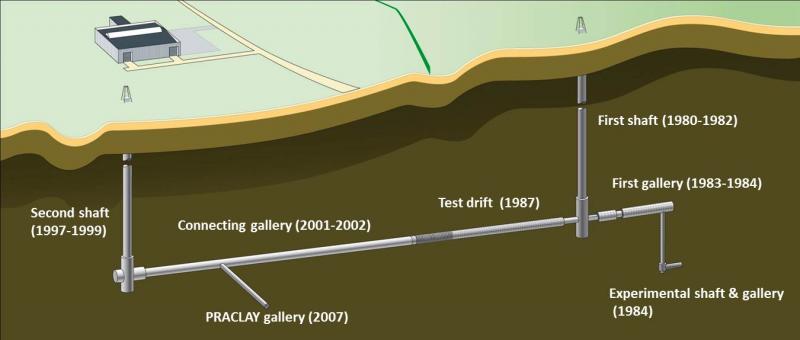
The construction of the HADES underground research laboratory demonstrated that it is feasible to build an industrial-scale waste repository in poorly indurated clay.
Since excavation began in 1980, the excavation and construction technology used to create shafts and galleries has changed dramatically. HADES was completed in two phases. The first section was built in the 1980s during what was known as the pioneering era. The laboratory was extended in the late 1990s using industrial techniques to demonstrate the technical and economic feasibility of constructing a waste repository at great depth in poorly indurated clay and to study the impact of excavation on safety.
EIG EURIDICE manages all the knowledge and know-how that has been gained over the years.
Pioneering work during the 1980s
 |
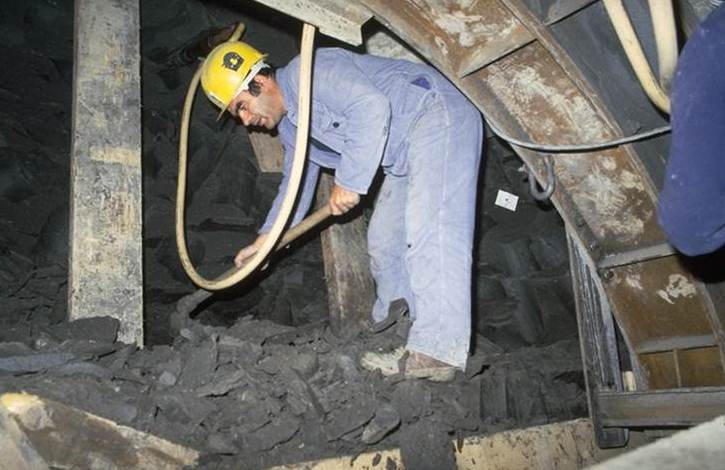 |
 |
| Freezing the clay | Manual excavation | Concrete gallery lining |
Work on the first shaft began in 1980, which stretched down 190 metres through water-bearing layers of sand. The sand was pre-frozen, a technique often used in mine construction to prevent shafts filling with water during excavation. In those days, however, people had little experience of excavating tunnels in poorly indurated clay at great depth. Based on the results of the geomechanical survey, the clay was expected to close relatively quickly during excavation. To prevent this, it was decided to freeze the clay down to 240 metres. The first gallery was excavated manually in frozen clay at a depth of 225 metres and was supported with cast-iron rings. Once the clay thawed, it was found that its creep radte was relatively low and that there was enough time to install support to prevent the clay closing up. In 1984, as a test, an experimental shaft and gallery were excavated without freezing the clay. Concrete blocks were used as support, which proved to be just as effective as cast-iron rings, but less expensive. Excavating in unfrozen clay and using concrete blocks as support instead of cast iron represented significant progress during this pioneering period.
The experimental shaft was then sealed off as part of the RESEAL experiment. This enabled researchers to demonstrate that it is possible to hermetically seal the shafts of a real waste repository using a material with the same favourable properties as Boom Clay, ensuring that radioactive substances cannot escape from the repository by this route.
In 1987 a second gallery 66 metres long was excavated in unfrozen clay and supported with concrete blocks. The excavation work proceeded manually for the most part, at an average speed of 3 metres per week.
Industrial phase
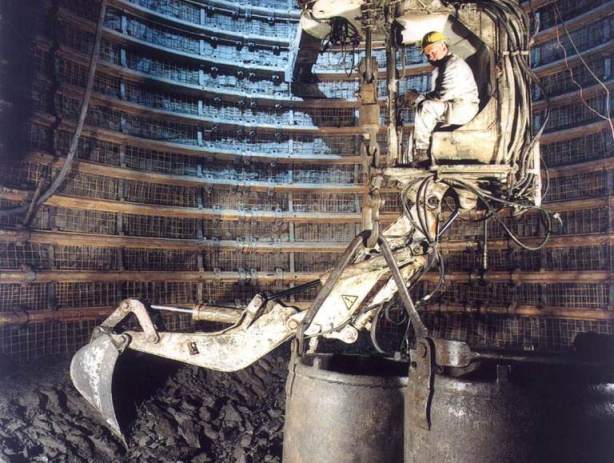 |
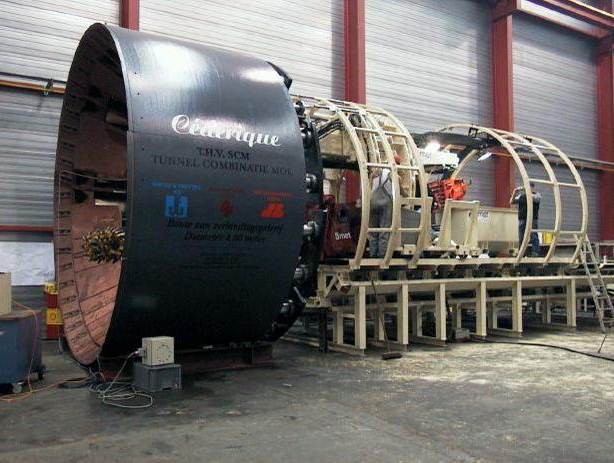 |
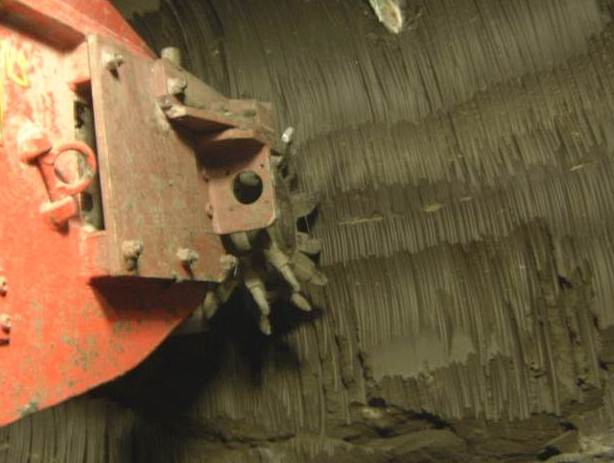 |
| Excavation of second shaft | Industrial tunnelling machine | Excavation of Connecting gallery |
The laboratory was extended in the late 1990s using industrial techniques with the aim of demonstrating the technical and economic feasibility of constructing a waste repository at great depth in poorly indurated clay. After the second shaft was built, the 80-metre Connecting gallery was completed in six weeks using an industrial tunnelling machine. The technique used to excavate the Connecting gallery is similar to that used for underground train tunnels. Both excavation of the clay and installation of the gallery lining were carried out fully automatically. An average speed of 3 metres per day was achieved using this technique, sufficient for building a waste repository. The higher excavation speed and the use of a tunnelling shield, which carves out a smooth surface in the clay onto which the concrete support blocks fit perfectly, also ensure that the clay is much less damaged than it is during manual excavation.
While the work was in progress, the mechanical behaviour of the clay in the excavation-damaged zone was studied using several measuring instruments that had been placed in boreholes in the clay, drilled from inside the second gallery (old section) (CLIPEX and SELFRAC projects).
Finally, the PRACLAY gallery, a side gallery of the Connecting gallery, was built in the same way in 2007, demonstrating that it is possible to join a side gallery at right angles to a main gallery. The construction of this gallery and the installation of a reinforcement structure at the intersection with the main gallery also constitute phase 1 of the PRACLAY experiment.
